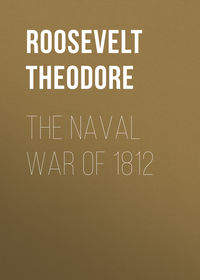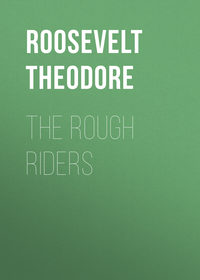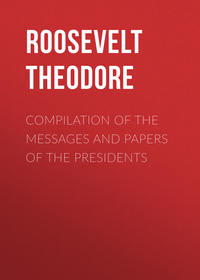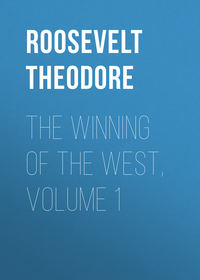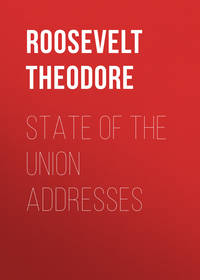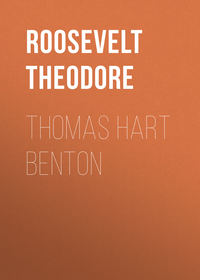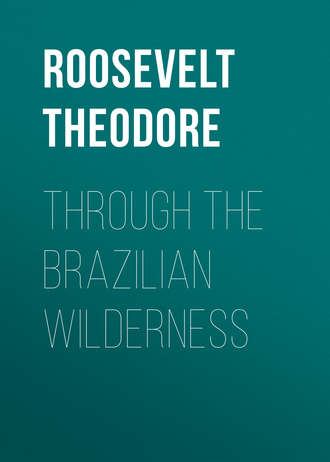 полная версия
полная версияThrough the Brazilian Wilderness
One afternoon we stopped at the home buildings or headquarters of one of the great outlying ranches of the Brazil Land and Cattle Company, the Farquahar syndicate, under the management of Murdo Mackenzie—than whom we have in the United States no better citizen or more competent cattleman. On this ranch there are some seventy thousand head of stock. We were warmly greeted by McLean, the head of the ranch, and his assistant Ramsey, an old Texan friend. Among the other assistants, all equally cordial, were several Belgians and Frenchmen. The hands were Paraguayans and Brazilians, and a few Indians—a hard-bit set, each of whom always goes armed and knows how to use his arms, for there are constant collisions with cattle thieves from across the Bolivian border, and the ranch has to protect itself. These cowhands, vaqueiros, were of the type with which we were now familiar: dark- skinned, lean, hard-faced men, in slouch-hats, worn shirts and trousers, and fringed leather aprons, with heavy spurs on their bare feet. They are wonderful riders and ropers, and fear neither man nor beast. I noticed one Indian vaqueiro standing in exactly the attitude of a Shilluk of the White Nile, with the sole of one foot against the other leg, above the knee. This is a region with extraordinary possibilities of cattle-raising.
At this ranch there was a tannery; a slaughter-house; a cannery; a church; buildings of various kinds and all degrees of comfort for the thirty or forty families who made the place their headquarters; and the handsome, white, two-story big house, standing among lemon-trees and flamboyants on the river-brink. There were all kinds of pets around the house. The most fascinating was a wee, spotted fawn which loved being petted. Half a dozen curassows of different species strolled through the rooms; there were also parrots of several different species, and immediately outside the house four or five herons, with unclipped wings, which would let us come within a few feet and then fly gracefully off, shortly afterward returning to the same spot. They included big and little white egrets and also the mauve and pearl-colored heron, with a partially black head and many- colored bill, which flies with quick, repeated wing-flappings, instead of the usual slow heron wing-beats.
In the warehouse were scores of skins of jaguar, puma, ocelot, and jaguarundi, and one skin of the big, small-toothed red wolf. These were all brought in by the cowhands and by friendly Indians, a price being put on each, as they destroyed the stock. The jaguars occasionally killed horses and full-grown cows, but not bulls. The pumas killed the calves. The others killed an occasional very young calf, but ordinarily only sheep, little pigs, and chickens. There was one black jaguar-skin; melanism is much more common among jaguars than pumas, although once Miller saw a black puma that had been killed by Indians. The patterns of the jaguar-skins, and even more of the ocelot-skins, showed wide variation, no two being alike. The pumas were for the most part bright red, but some were reddish gray, there being much the same dichromatism that I found among their Colorado kinsfolk. The jaguarundis were dark brownish gray. All these animals, the spotted jaguars and ocelots, the monochrome black jaguars, red pumas, and dark-gray jaguarundis, were killed in the same locality, with the same environment. A glance at the skins and a moment's serious thought would have been enough to show any sincere thinker that in these cats the coloration pattern, whether concealing or revealing, is of no consequence one way or the other as a survival factor. The spotted patterns conferred no benefit as compared with the nearly or quite monochrome blacks, reds, and dark grays. The bodily condition of the various beasts was equally good, showing that their success in life, that is, their ability to catch their prey, was unaffected by their several color schemes. Except white, there is no color so conspicuously advertising as black; yet the black jaguar had been a fine, well-fed, powerful beast. The spotted patterns in the forests, and perhaps even in the marshes which the jaguars so frequently traversed, are probably a shade less conspicuous than the monochrome red and gray, but the puma and jaguarundi are just as hard to see, and evidently find it just as easy to catch prey, as the jaguar and ocelot. The little fawn which we saw was spotted; the grown deer had lost the spots; if the spots do really help to conceal the wearer, it is evident that the deer has found the original concealing coloration of so little value that it has actually been lost in the course of the development of the species. When these big cats and the deer are considered, together with the dogs, tapirs, peccaries, capybaras, and big ant-eaters which live in the same environment, and when we also consider the difference between the young and the adult deer and tapirs (both of which when adult have substituted a complete or partial monochrome for the ancestral spots and streaks), it is evident that in the present life and in the ancestral development of the big mammals of South America coloration is not and has not been a survival factor; any pattern and any color may accompany the persistence and development of the qualities and attributes which are survival factors. Indeed, it seems hard to believe that in their ordinary environments such color schemes as the bright red of the marsh-deer, the black of the black jaguar, and the black with white stripes of the great tamandua, are not positive detriments to the wearers. Yet such is evidently not the case. Evidently the other factors in species- survival are of such overwhelming importance that the coloration becomes negligible from this standpoint, whether it be concealing or revealing. The cats mould themselves to the ground as they crouch or crawl. They take advantage of the tiniest scrap of cover. They move with extraordinary stealth and patience. The other animals which try to sneak off in such manner as to escape observation approach more or less closely to the ideal which the cats most nearly realize. Wariness, sharp senses, the habit of being rigidly motionless when there is the least suspicion of danger, and ability to take advantage of cover, all count. On the bare, open, treeless plain, whether marsh, meadow, or upland, anything above the level of the grass is seen at once. A marsh-deer out in the open makes no effort to avoid observation; its concern is purely to see its foes in time to leave a dangerous neighborhood. The deer of the neighboring forest skulk and hide and lie still in dense cover to avoid being seen. The white- lipped peccaries make no effort to escape observation by being either noiseless or motionless; they trust for defence to their gregariousness and truculence. The collared peccary also trusts to its truculence, but seeks refuge in a hole where it can face any opponent with its formidable biting apparatus. As for the giant tamandua, in spite of its fighting prowess I am wholly unable to understand how such a slow and clumsy beast has been able through the ages to exist and thrive surrounded by jaguars and pumas. Speaking generally, the animals that seek to escape observation trust primarily to smell to discover their foes or their prey, and see whatever moves and do not see whatever is motionless.
By the morning of January 5 we had left the marsh region. There were low hills here and there, and the land was covered with dense forest. From time to time we passed little clearings with palm-thatched houses. We were approaching Caceres, where the easiest part of our trip would end. We had lived in much comfort on the little steamer. The food was plentiful and the cooking good. At night we slept on deck in cots or hammocks. The mosquitoes were rarely troublesome, although in the daytime we were sometimes bothered by numbers of biting horse- flies. The bird life was wonderful. One of the characteristic sights we were always seeing was that of a number of heads and necks of cormorants and snake-birds, without any bodies, projecting above water, and disappearing as the steamer approached. Skimmers and thick- billed tern were plentiful here right in the heart of the continent. In addition to the spurred lapwing, characteristic and most interesting resident of most of South America, we found tiny red- legged plover which also breed and are at home in the tropics. The contrasts in habits between closely allied species are wonderful. Among the plovers and bay snipe there are species that live all the year round in almost the same places, in tropical and subtropical lands; and other related forms which wander over the whole earth, and spend nearly all their time, now in the arctic and cold temperate regions of the far north, now in the cold temperate regions of the south. These latter wide-wandering birds of the seashore and the river bank pass most of their lives in regions of almost perpetual sunlight. They spend the breeding season, the northern summer, in the land of the midnight sun, during the long arctic day. They then fly for endless distances down across the north temperate zone, across the equator, through the lands where the days and nights are always of equal length, into another hemisphere, and spend another summer of long days and long twilights in the far south, where the Antarctic winds cool them, while their nesting home, at the other end of the world, is shrouded beneath the iron desolation of the polar night.
In the late afternoon of the 5th we reached the quaint old-fashioned little town of Sao Luis de Caceres, on the outermost fringe of the settled region of the state of Matto Grosso, the last town we should see before reaching the villages of the Amazon. As we approached we passed half-clad black washerwomen on the river's edge. The men, with the local band, were gathered at the steeply sloping foot of the main street, where the steamer came to her moorings. Groups of women and girls, white and brown, watched us from the low bluff; their skirts and bodices were red, blue, green, of all colors. Sigg had gone ahead with much of the baggage; he met us in an improvised motor-boat, consisting of a dugout to the side of which he had clamped our Evinrude motor; he was giving several of the local citizens of prominence a ride, to their huge enjoyment. The streets of the little town were unpaved, with narrow brick sidewalks. The one-story houses were white or blue, with roofs of red tiles and window-shutters of latticed woodwork, come down from colonial days and tracing back through Christian and Moorish Portugal to a remote Arab ancestry. Pretty faces, some dark, some light, looked out from these windows; their mothers' mothers, for generations past, must thus have looked out of similar windows in the vanished colonial days. But now even here in Caceres the spirit of the new Brazil is moving; a fine new government school has been started, and we met its principal, an earnest man doing excellent work, one of the many teachers who, during the last few years, have been brought to Matto Grosso from Sao Paulo, a centre of the new educational movement which will do so much for Brazil.
Father Zahm went to spend the night with some French Franciscan friars, capital fellows. I spent the night at the comfortable house of Lieutenant Lyra; a hot-weather house with thick walls, big doors, and an open patio bordered by a gallery. Lieutenant Lyra was to accompany us; he was an old companion of Colonel Rondon's explorations. We visited one or two of the stores to make some final purchases, and in the evening strolled through the dusky streets and under the trees of the plaza; the women and girls sat in groups in the doorways or at the windows, and here and there a stringed instrument tinkled in the darkness.
From Caceres onward we were entering the scene of Colonel Rondon's explorations. For some eighteen years he was occupied in exploring and in opening telegraph lines through the eastern or north middle part of the great forest state, the wilderness state of the "Matto Grosso"– the "great wilderness," or, as Australians would call it, "the bush." Then, in 1907, he began to penetrate the unknown region lying to the north and west. He was the head of the exploring expeditions sent out by the Brazilian Government to traverse for the first time this unknown land; to map for the first time the courses of the rivers which from the same divide run into the upper portions of the Tapajos and the Madeira, two of the mighty affluents of the Amazon, and to build telegraph-lines across to the Madeira, where a line of Brazilian settlements, connected by steamboat lines and a railroad, again occurs. Three times he penetrated into this absolutely unknown, Indian-haunted wilderness, being absent for a year or two at a time and suffering every imaginable hardship, before he made his way through to the Madeira and completed the telegraph-line across. The officers and men of the Brazilian Army and the civilian scientists who followed him shared the toil and the credit of the task. Some of his men died of beriberi; some were killed or wounded by the Indians; he himself almost died of fever; again and again his whole party was reduced almost to the last extremity by starvation, disease, hardship, and the over-exhaustion due to wearing fatigues. In dealing with the wild, naked savages he showed a combination of fearlessness, wariness, good judgment, and resolute patience and kindliness. The result was that they ultimately became his firm friends, guarded the telegraph- lines, and helped the few soldiers left at the isolated, widely separated little posts. He and his assistants explored, and mapped for the first time, the Juruena and the Gy-Parana, two important affluents of the Tapajos and the Madeira respectively. The Tapajos and the Madeira, like the Orinoco and Rio Negro, have been highways of travel for a couple of centuries. The Madeira (as later the Tapajos) was the chief means of ingress, a century and a half ago, to the little Portuguese settlements of this far interior region of Brazil; one of these little towns, named Matto Grosso, being the original capital of the province. It has long been abandoned by the government, and practically so by its inhabitants, the ruins of palace, fortress, and church now rising amid the rank tropical luxuriance of the wild forest. The mouths of the main affluents of these highway rivers were as a rule well known. But in many cases nothing but the mouth was known. The river itself was not known, and it was placed on the map by guesswork. Colonel Rondon found, for example, that the course of the Gy-Parana was put down on the map two degrees out of its proper place. He, with his party, was the first to find out its sources, the first to traverse its upper course, the first to map its length. He and his assistants performed a similar service for the Juruena, discovering the sources, discovering and descending some of the branches, and for the first time making a trustworthy map of the main river itself, until its junction with the Tapajos. Near the watershed between the Juruena and the Gy-Parana he established his farthest station to the westward, named Jose Bonofacio, after one of the chief republican patriots of Brazil. A couple of days' march northwestward from this station, he in 1909 came across a part of the stream of a river running northward between the Gy-Parana and the Juruena; he could only guess where it debouched, believing it to be into the Madeira, although it was possible that it entered the Gy-Parana or Tapajos. The region through which it flows was unknown, no civilized man having ever penetrated it; and as all conjecture as to what the river was, as to its length, and as to its place of entering into some highway river, was mere guess-work, he had entered it on his sketch maps as the Rio da Duvida, the River of Doubt. Among the officers of the Brazilian Army and the scientific civilians who have accompanied him there have been not only expert cartographers, photographers, and telegraphists, but astronomers, geologists, botanists, and zoologists. Their reports, published in excellent shape by the Brazilian Government, make an invaluable series of volumes, reflecting the highest credit on the explorers, and on the government itself. Colonel Rondon's own accounts of his explorations, of the Indian tribes he has visited, and of the beautiful and wonderful things he has seen, possess a peculiar interest.
V. UP THE RIVER OF TAPIRS
After leaving Caceres we went up the Sepotuba, which in the local Indian dialect means River of Tapirs. This river is only navigable for boats of size when the water is high. It is a swift, fairly clear stream, rushing down from the Plan Alto, the high uplands, through the tropical lowland forest. On the right hand, or western bank, and here and there on the left bank, the forest is broken by natural pastures and meadows, and at one of these places, known as Porto Campo, sixty or seventy miles above the mouth, there is a good-sized cattle-ranch. Here we halted, because the launch, and the two pranchas—native trading-boats with houses on their decks—which it towed, could not carry our entire party and outfit. Accordingly most of the baggage and some of the party were sent ahead to where we were to meet our pack- train, at Tapirapoan. Meanwhile the rest of us made our first camp under tents at Porto Campo, to wait the return of the boats. The tents were placed in a line, with the tent of Colonel Rondon and the tent in which Kermit and I slept, in the middle, beside one another. In front of these two, on tall poles, stood the Brazilian and American flags; and at sunrise and sunset the flags were hoisted and hauled down while the trumpet sounded and all of us stood at attention. Camp was pitched beside the ranch buildings. In the trees near the tents grew wonderful violet orchids.
Many birds were around us; I saw some of them, and Cherrie and Miller many, many more. They ranged from party-colored macaws, green parrots, and big gregarious cuckoos down to a brilliant green-and-chestnut kingfisher, five and a quarter inches long, and a tiny orange-and- green manakin, smaller than any bird I have ever seen except a hummer. We also saw a bird that really was protectively colored; a kind of whippoorwill which even the sharp-eyed naturalists could only make out because it moved its head. We saw orange-bellied squirrels with showy orange tails. Lizards were common. We killed our first poisonous snake (the second we had seen), an evil lance-headed jararaca that was swimming the river. We also saw a black-and-orange harmless snake, nearly eight feet long, which we were told was akin to the mussurama; and various other snakes. One day while paddling in a canoe on the river, hoping that the dogs might drive a tapir to us, they drove into the water a couple of small bush deer instead. There was no point in shooting them; we caught them with ropes thrown over their heads; for the naturalists needed them as specimens, and all of us needed the meat. One of the men was stung by a single big red maribundi wasp. For twenty-four hours he was in great pain and incapacitated for work. In a lagoon two of the dogs had the tips of their tails bitten off by piranhas as they swam, and the ranch hands told us that in this lagoon one of their hounds had been torn to pieces and completely devoured by the ravenous fish. It was a further illustration of the uncertainty of temper and behavior of these ferocious little monsters. In other lagoons they had again and again left us and our dogs unmolested. They vary locally in aggressiveness just as sharks and crocodiles in different seas and rivers vary.
On the morning of January 9th we started out for a tapir-hunt. Tapirs are hunted with canoes, as they dwell in thick jungle and take to the water when hounds follow them. In this region there were extensive papyrus-swamps and big lagoons, back from the river, and often the tapirs fled to these for refuge, throwing off the hounds. In these places it was exceedingly difficult to get them; our best chance was to keep to the river in canoes, and paddle toward the spot in the direction of which the hounds, by the noise, seemed to be heading. We started in four canoes. Three of them were Indian dugouts, very low in the water. The fourth was our Canadian canoe, a beauty; light, safe, roomy, made of thin slats of wood and cement-covered canvas. Colonel Rondon, Fiala with his camera, and I went in this canoe, together with two paddlers. The paddlers were natives of the poorer class. They were good men. The bowsman was of nearly pure white blood; the steersman was of nearly pure negro blood, and was evidently the stronger character and better man of the two. The other canoes carried a couple of fazendeiros, ranchmen, who had come up from Caceres with their dogs. These dugouts were manned by Indian and half-caste paddlers, and the fazendeiros, who were of nearly pure white blood, also at times paddled vigorously. All were dressed in substantially similar clothes, the difference being that those of the camaradas, the poorer men or laborers, were in tatters. In the canoes no man wore anything save a shirt, trousers, and hat, the feet being bare. On horseback they wore long leather leggings which were really simply high, rather flexible boots with the soles off; their spurs were on their tough bare feet. There was every gradation between and among the nearly pure whites, negroes, and Indians. On the whole, there was the most white blood in the upper ranks, and most Indian and negro blood among the camaradas; but there were exceptions in both classes, and there was no discrimination on account of color. All alike were courteous and friendly.
The hounds were at first carried in two of the dugouts, and then let loose on the banks. We went up-stream for a couple of hours against the swift current, the paddlers making good headway with their pointed paddles—the broad blade of each paddle was tipped with a long point, so that it could be thrust into the mud to keep the low dugout against the bank. The tropical forest came down almost like a wall, the tall trees laced together with vines, and the spaces between their trunks filled with a low, dense jungle. In most places it could only be penetrated by a man with a machete. With few exceptions the trees were unknown to me, and their native names told me nothing. On most of them the foliage was thick; among the exceptions were the cecropias, growing by preference on new-formed alluvial soil bare of other trees, whose rather scanty leaf bunches were, as I was informed, the favorite food of sloths. We saw one or two squirrels among the trees, and a family of monkeys. There were few sand-banks in the river, and no water-fowl save an occasional cormorant. But as we pushed along near the shore, where the branches overhung and dipped in the swirling water, we continually roused little flocks of bats. They were hanging from the boughs right over the river, and when our approach roused them they zigzagged rapidly in front of us for a few rods, and then again dove in among the branches.
At last we landed at a point of ground where there was little jungle, and where the forest was composed of palms and was fairly open. It was a lovely bit of forest. The colonel strolled off in one direction, returning an hour later with a squirrel for the naturalists. Meanwhile Fiala and I went through the palm wood to a papyrus-swamp. Many trails led through the woods, and especially along the borders of the swamp; and, although their principal makers had evidently been cattle, yet there were in them footprints of both tapir and deer. The tapir makes a footprint much like that of a small rhinoceros, being one of the odd-toed ungulates. We could hear the dogs now and then, evidently scattered and running on various trails. They were a worthless lot of cur-hounds. They would chase tapir or deer or anything else that ran away from them as long as the trail was easy to follow; but they were not stanch, even after animals that fled, and they would have nothing whatever to do with animals that were formidable.
While standing by the marsh we heard something coming along one of the game paths. In a moment a buck of the bigger species of bush deer appeared, a very pretty and graceful creature. It stopped and darted back as soon as it saw us, giving us no chance for a shot; but in another moment we caught glimpses of it running by at full speed, back among the palms. I covered an opening between two tree-trunks. By good luck the buck appeared in the right place, giving me just time to hold well ahead of him and fire. At the report he went down in a heap, the "umbrella-pointed" bullet going in at one shoulder, and ranging forward, breaking the neck. The leaden portion of the bullet, in the proper mushroom or umbrella shape, stopped under the neck skin on the farther side. It is a very effective bullet.





